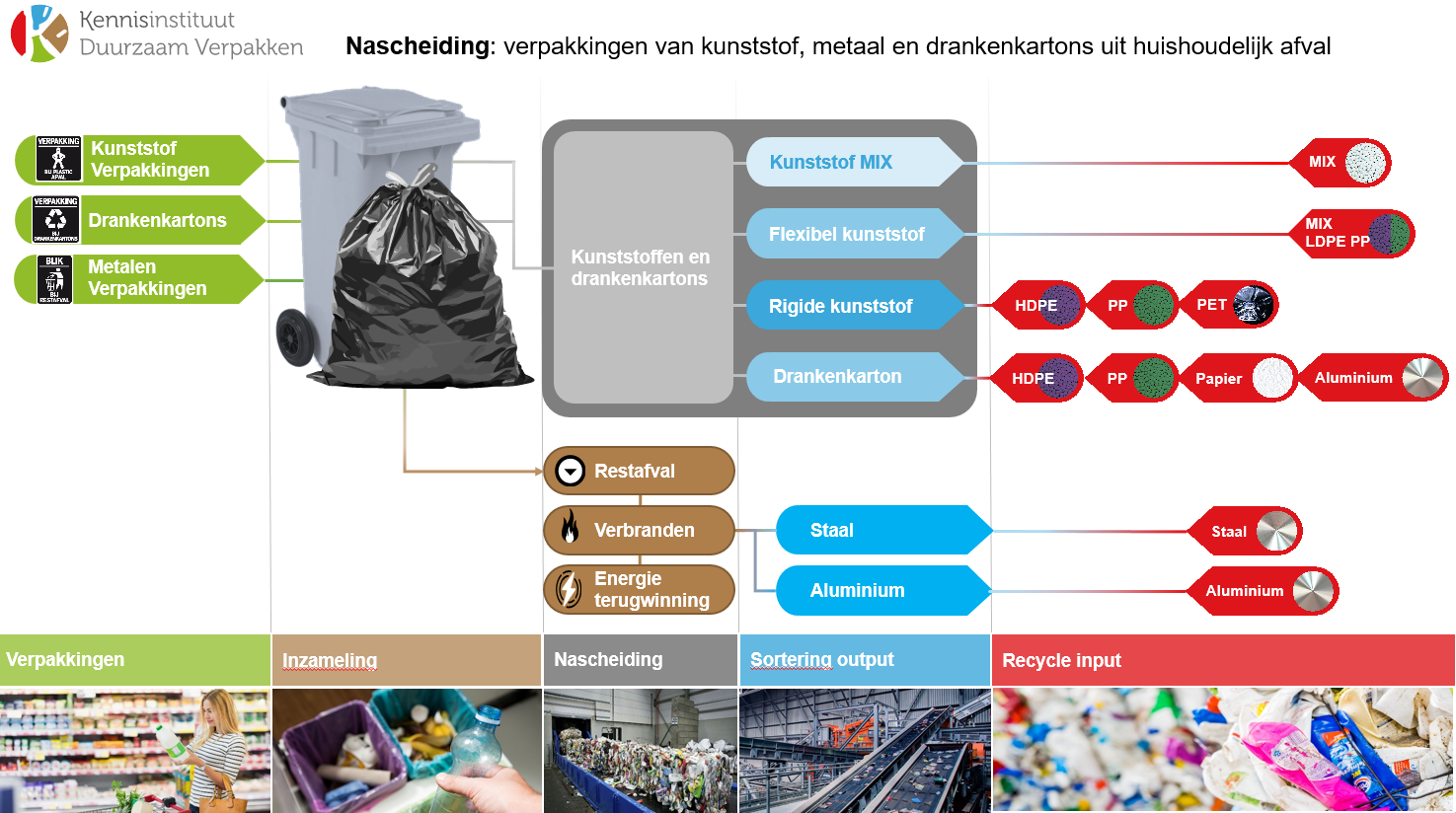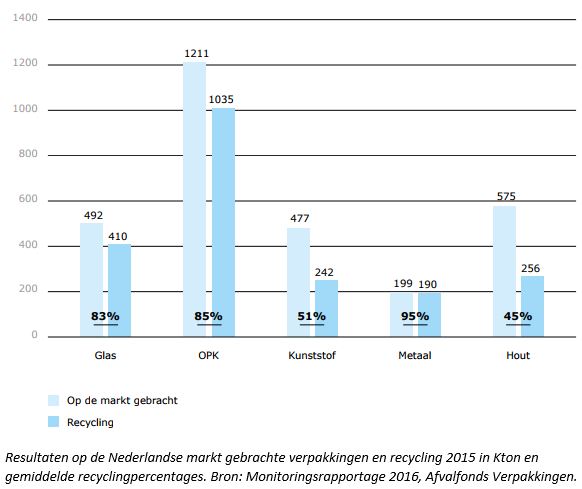The differentiation between source separation and subsequent separation of plastic packaging materials, metal packaging materials, and beverage cartons is made because of the different conditions that exist in municipalities, among other reasons. For example, in places with a lot of high-rise buildings, where citizens have less space available for multiple waste bins, waste collection occurs via source separation in (underground) containers or via subsequent separation. Below, you will find a detailed representation of the collection of the plastic, metal, and beverage carton material streams via source and subsequent separation.

Recycling of packaging materials
The Netherlands is doing well when it comes to recycling, compared to other European countries. In 2016, 73% of all packaging materials put on the market were recycled. That exceeds the Dutch target of 70%, as recorded in the Packaging Decree, and the EU’s target of 55%.

Multiple parties are involved in the process of collecting, processing, sorting, and recycling used packaging materials. Each party is responsible for part of the chain:
- Municipalities are responsible for the collection of household waste. They choose a collection system and are responsible for the information provision towards citizens. The actual collecting is handled by municipal or private waste collectors.
- Collectors pick up the waste from households or collection points and transport the various waste streams to sorting or processing installations.
- Waste streams are sorted by different waste sorters that specialise in certain types of waste, for example glass, paper, metal, beverage cartons, or plastics.
- Recyclers process the separated materials into raw materials. These are then sold to producers who use them to make new packaging materials.


